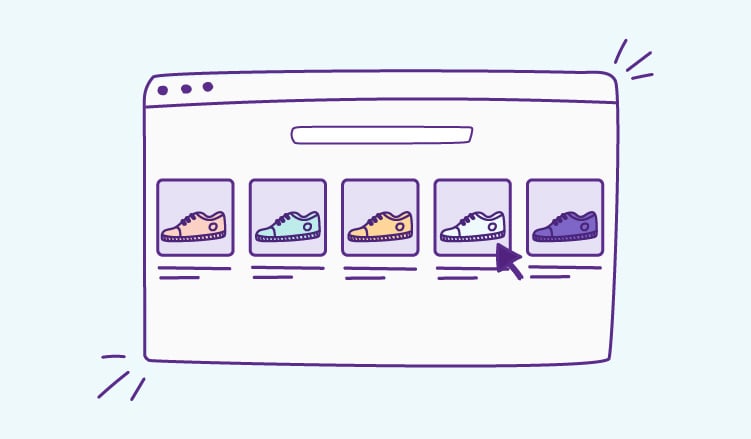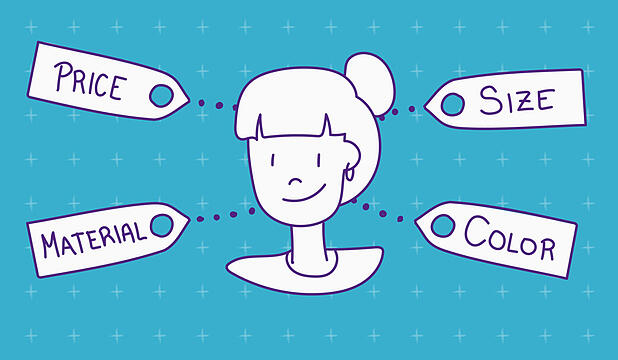As the ecommerce industry continues to thrive, more businesses and entrepreneurs are joining in on the online shopping revolution to reap the benefits. According to BigCommerce, ecommerce is set to make up 22% of retail sales worldwide by the end of the coming year.
When you consider just how comfortable people across the globe have become with online shopping, that number of projected ecommerce sales comes as no surprise. As a new ecommerce business owner, there’s a lot of potential waiting ahead of you. However, ecommerce is a very competitive industry, you need to be armed with the right website set up, marketing strategies, and tools to help you execute everything successfully.
As you start setting up your web shops, you will realize that there’s ecommerce terminology you need to fully understand to fill your stores with the right information that will drive conversions and sales. In this article, we’ll break down these terms to help you get started with confidence.
Product identifiers
Product identifiers are numeric or alphanumeric numbers that enable ecommerce store owners to identify and track products in their inventory. They are typically between 8-14 digits and come in different formats. Common product identifiers include: SKU (Stock Keeping Unit), GTIN (Global Trade Item Number), MPN (Manufacturer Part Numbers), BPN (Bin Picking Number), and UPC (Universal Product Code).
If you start selling on multiple sales channels, such as your own webstore via the BigCommerce platform, Amazon, eBay, Google Shopping, etc., you may need to use different identifiers based on the requirements of each platform. But if you open up multistores from a single platform, like BigCommerce Multistores, you can choose a single unique identifier.
Product attributes
Product attributes are characteristics that define a product and can be defined in two ways: tangible and intangible.
- Tangible attributes — color, size, weight, volume, material, smell, taste, touch, etc.
- Intangible attributes — quality, price, features, etc.
These are essential elements that shoppers look out for when searching for products to buy. That’s why it’s important to ensure that they’re available, accurate, and up-to-date on your web shops.
Product variants
Product variants refer to products that are made from a single model but have different aspects. What do we mean by this? They’re created to provide customers purchasing options from the same product. For example, if you have a sweatshirt in four different colors (black, blue, gray, taupe) and five different sizes (xs, s, m, l, xl) , in total you have 20 variations of the same product.
Having variants adds value to a customer's shopping experience as it enables them to search for a product that best suits their needs or preferences. Using the sweatshirt example above, if a customer searches for a “Gray Sweatshirt,” they’re more likely to land on your webshop if you have variants. But if you only have a single color jacket, they’ll find the color they want from a competitor’s website.
Here’s a visual example:
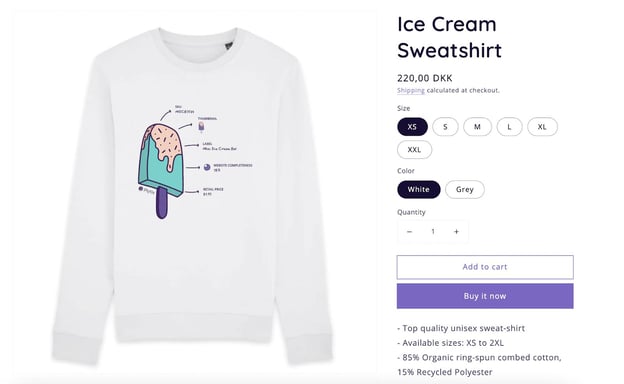
Product groups
Product grouping is the process of grouping product variants into a single parent product (the main or primary product) to help customers find the exact product that suits their preferences without doing too much leg work. For instance, if products are ungrouped, a customer would have to use search and filtering options to find a product in the variant they prefer.
To put it into perspective, if a customer lands on a black sweatshirt but prefers a white sweatshirt, and the products are ungrouped, they will have to use the search bar or the color filtering option to search for a white version of the sweatshirt. This is not a great user experience as it forces a customer to work hard to find what they need. Whereas if your products were grouped they’d easily find the product they’re looking for. It’s important to note that modern day customers will not stick around when they can’t find the information they need. They will simply move on to an online shop that offers all of the product information and groupings they need.
Product tags
Product tags are descriptive keywords or phrases that enable customers to narrow down product discovery and search on your online store. These tags can be a mixture of product attributes and other keywords or phrases that help identify a product. For example, a customer might actively search for “Black Biker Jacket With Pockets”. If you’ve added the attributes “black jacket” and tags: “biker”, “pockets,” the customer will easily find the product.
Product categories
Product categorization, also known as product taxonomy, refers to the organizational structure of products that are grouped together based on the characteristics that they share. It allows customers to intuitively browse your product catalog without getting lost as they navigate your website. Most online shops categorize products in hierarchies, facets, or a combination of both.
Hierarchical format example Facet format example
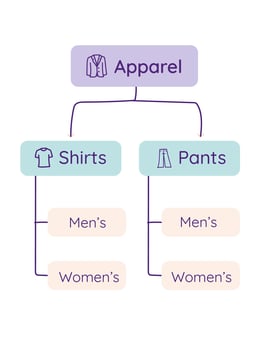
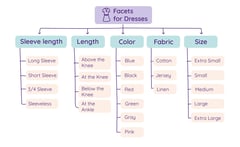
A single product can be assigned to multiple categories, based on the attributes attached to it. For example, a unisex t-shirt can be assigned to both “women’s” and “men’s” categories since it fits on both sides of category options.
Understanding these terms and what role they play in the success of your ecommerce stores will enable you to deliver on customer expectations. But there’s an even bigger opportunity to help you seamlessly get this product information together and ready for customers. We’re referring to a product information software. Let’s briefly explain what that is and how it can help you.
Simplify your web shop set up with Plytix
Plytix is a product information database that can store all kinds of product information in a single location. All of these ecommerce terms we’ve explained above can be a bit complicated in practice, but a PIM database like Plytix simplifies the process of assigning identifiers, attributes, variants, tags, categories, and groupings.
It enables you to effectively prepare all of your product information for accuracy and completeness before it faces the customers in your stores. The best part is that there are tons of guides to set these up, from our YouTube channel to our help center platform, we’ll hold your hand throughout your journey.
If you’re keen to learn more about Plytix and how we can help you with your new online selling adventure, book your demo today! You can also read this guide that explains everything you need to know about multichannel commerce and why it’s the future of ecommerce.


